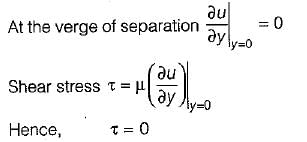GATE Exam > GATE Tests > Test: Boundary Layer Theory - 2 - GATE MCQ
Test: Boundary Layer Theory - 2 - GATE MCQ
Test Description
10 Questions MCQ Test - Test: Boundary Layer Theory - 2
Test: Boundary Layer Theory - 2 for GATE 2025 is part of GATE preparation. The Test: Boundary Layer Theory - 2 questions and answers have been prepared
according to the GATE exam syllabus.The Test: Boundary Layer Theory - 2 MCQs are made for GATE 2025 Exam.
Find important definitions, questions, notes, meanings, examples, exercises, MCQs and online tests for Test: Boundary Layer Theory - 2 below.
Solutions of Test: Boundary Layer Theory - 2 questions in English are available as part of our course for GATE & Test: Boundary Layer Theory - 2 solutions in
Hindi for GATE course.
Download more important topics, notes, lectures and mock test series for GATE Exam by signing up for free. Attempt Test: Boundary Layer Theory - 2 | 10 questions in 30 minutes | Mock test for GATE preparation | Free important questions MCQ to study for GATE Exam | Download free PDF with solutions
Test: Boundary Layer Theory - 2 - Question 1
The separation of boundary layer can be reduced by
Test: Boundary Layer Theory - 2 - Question 2
It is recommended that the diffuser angle should be kept less than 18° because
Detailed Solution for Test: Boundary Layer Theory - 2 - Question 2
Detailed Solution for Test: Boundary Layer Theory - 2 - Question 3
Detailed Solution for Test: Boundary Layer Theory - 2 - Question 4
Detailed Solution for Test: Boundary Layer Theory - 2 - Question 5
Test: Boundary Layer Theory - 2 - Question 6
If u∞ = free stream velocity
u = local velocity.
δ = boundary layer thickness
Then the momentum thickness θ is given by
Test: Boundary Layer Theory - 2 - Question 9
Given that
δ = boundary layer thickness
δ* = displacement thicknes
δe = energy thickness
θ = momentum thickness
The shape factor H is given by
Detailed Solution for Test: Boundary Layer Theory - 2 - Question 9
Test: Boundary Layer Theory - 2 - Question 10
Boundary layer flow separates from the surface if
Detailed Solution for Test: Boundary Layer Theory - 2 - Question 10
Information about Test: Boundary Layer Theory - 2 Page
In this test you can find the Exam questions for Test: Boundary Layer Theory - 2 solved & explained in the simplest way possible.
Besides giving Questions and answers for Test: Boundary Layer Theory - 2, EduRev gives you an ample number of Online tests for practice
Download as PDF

















